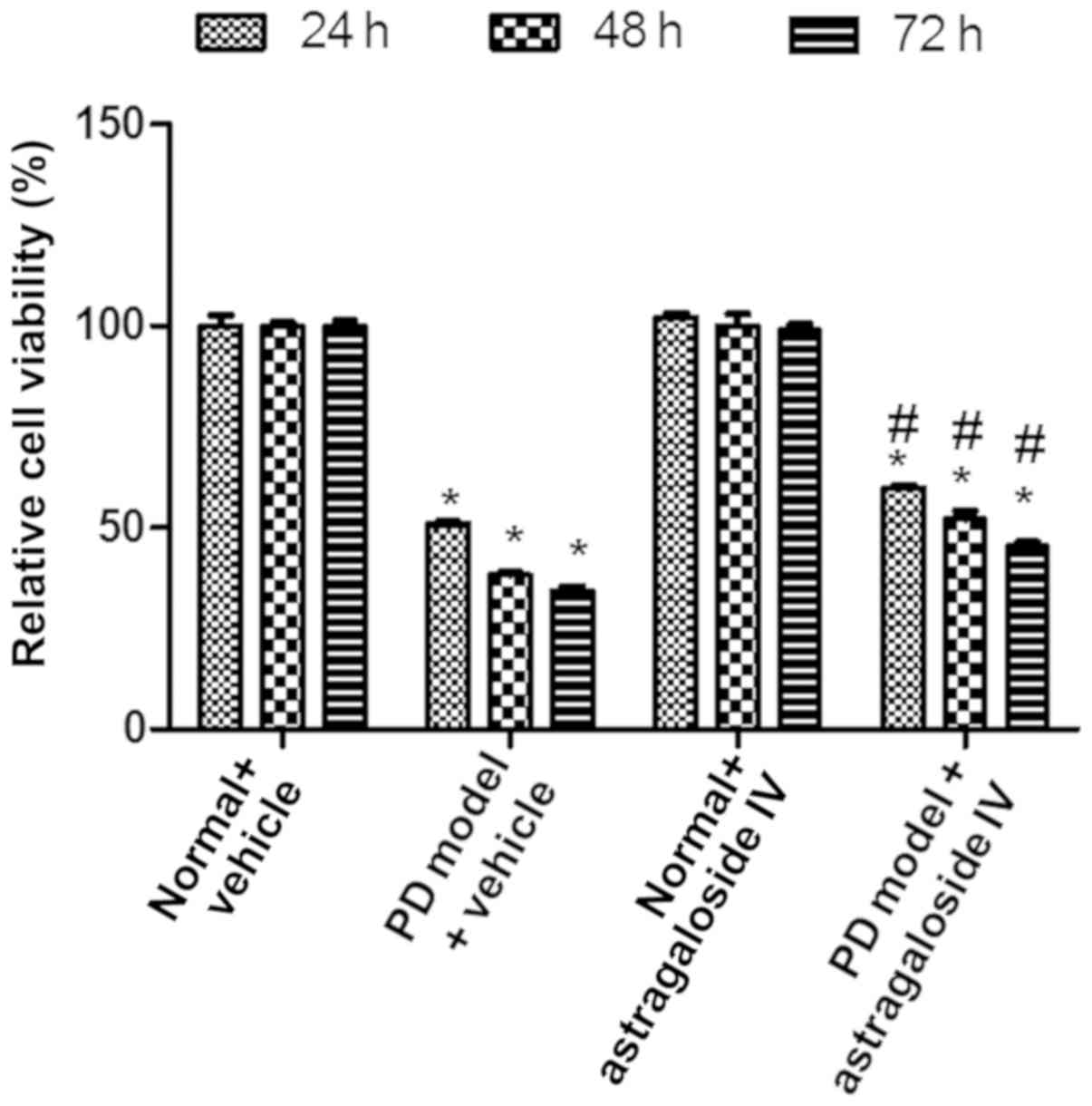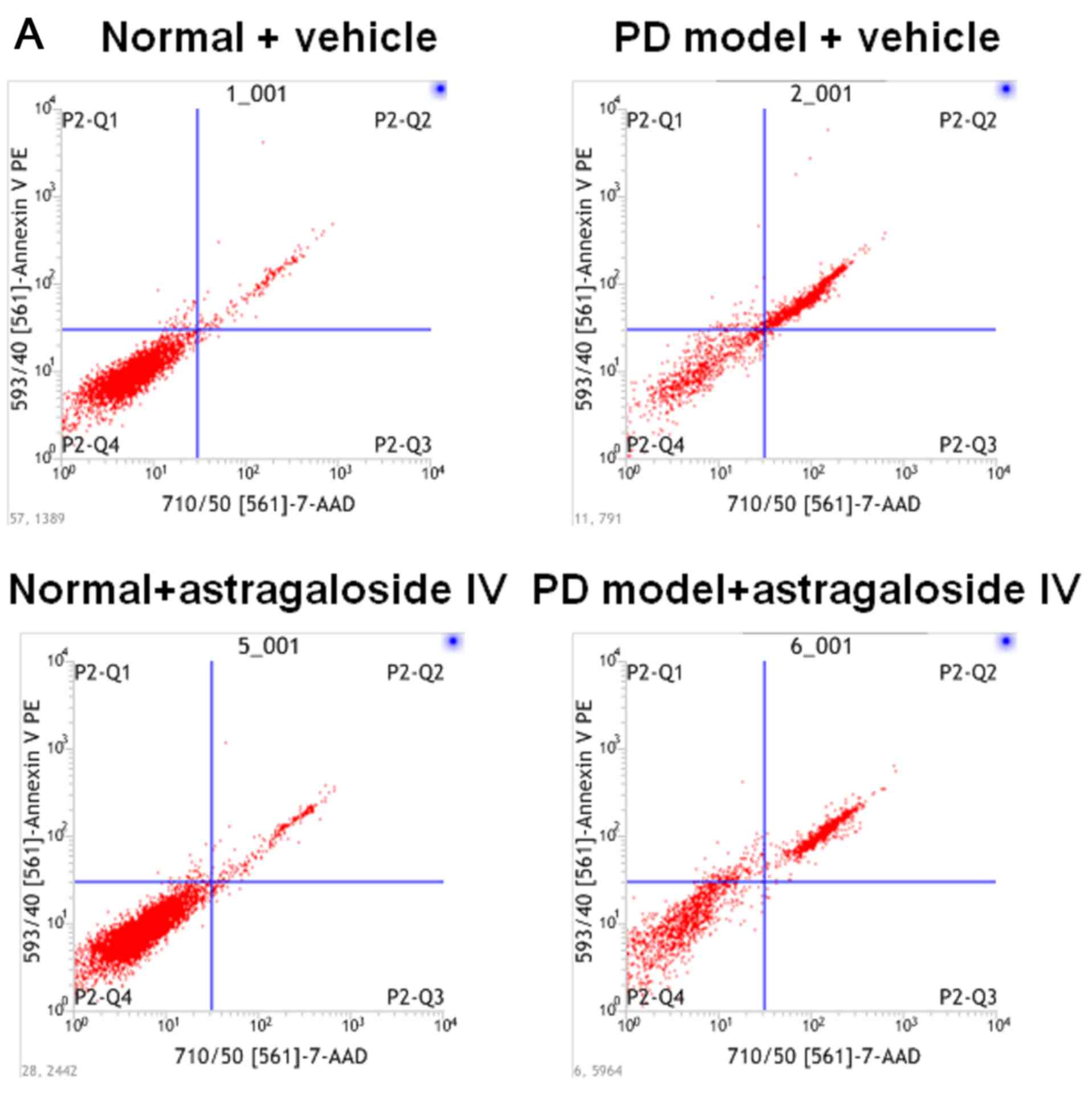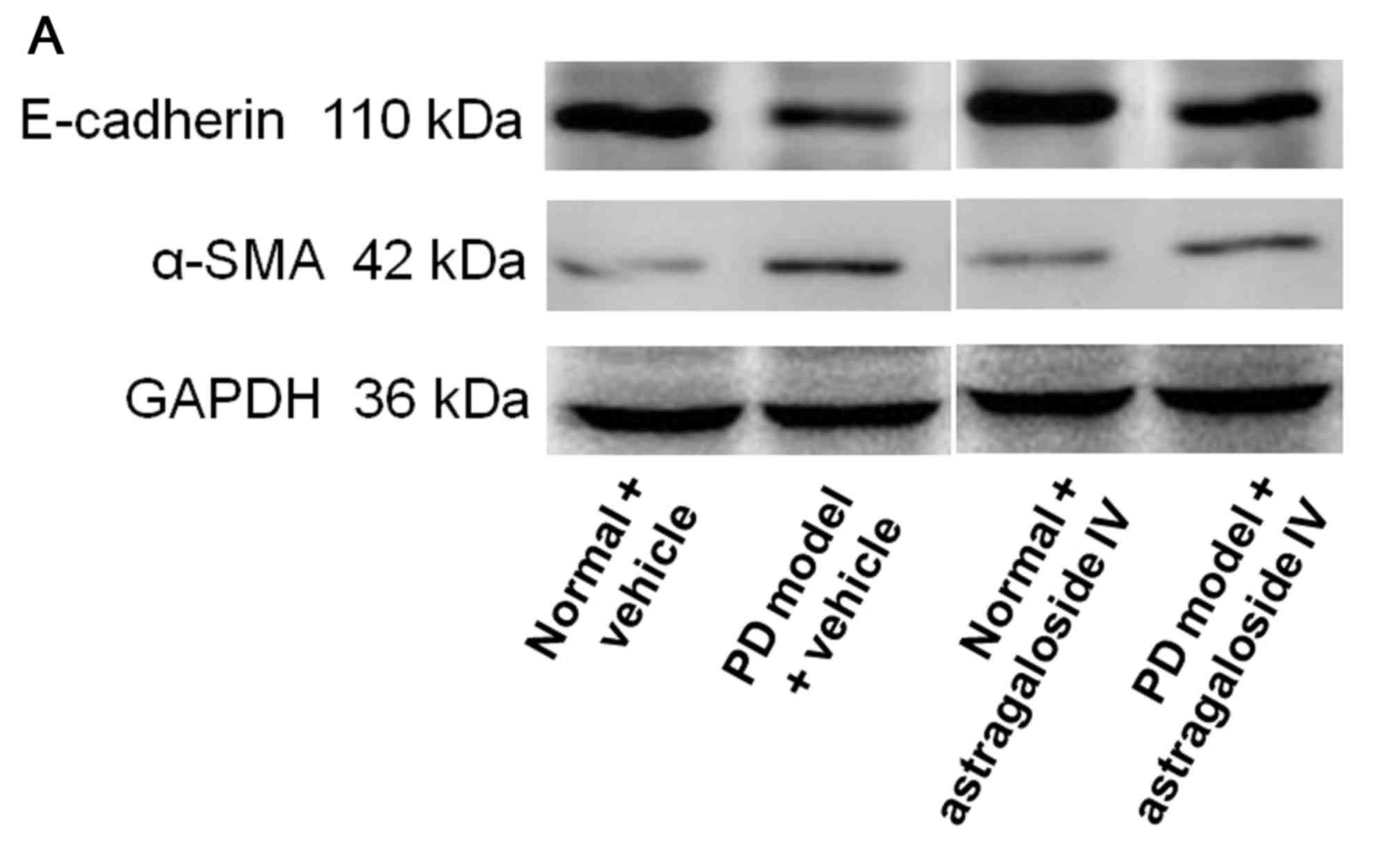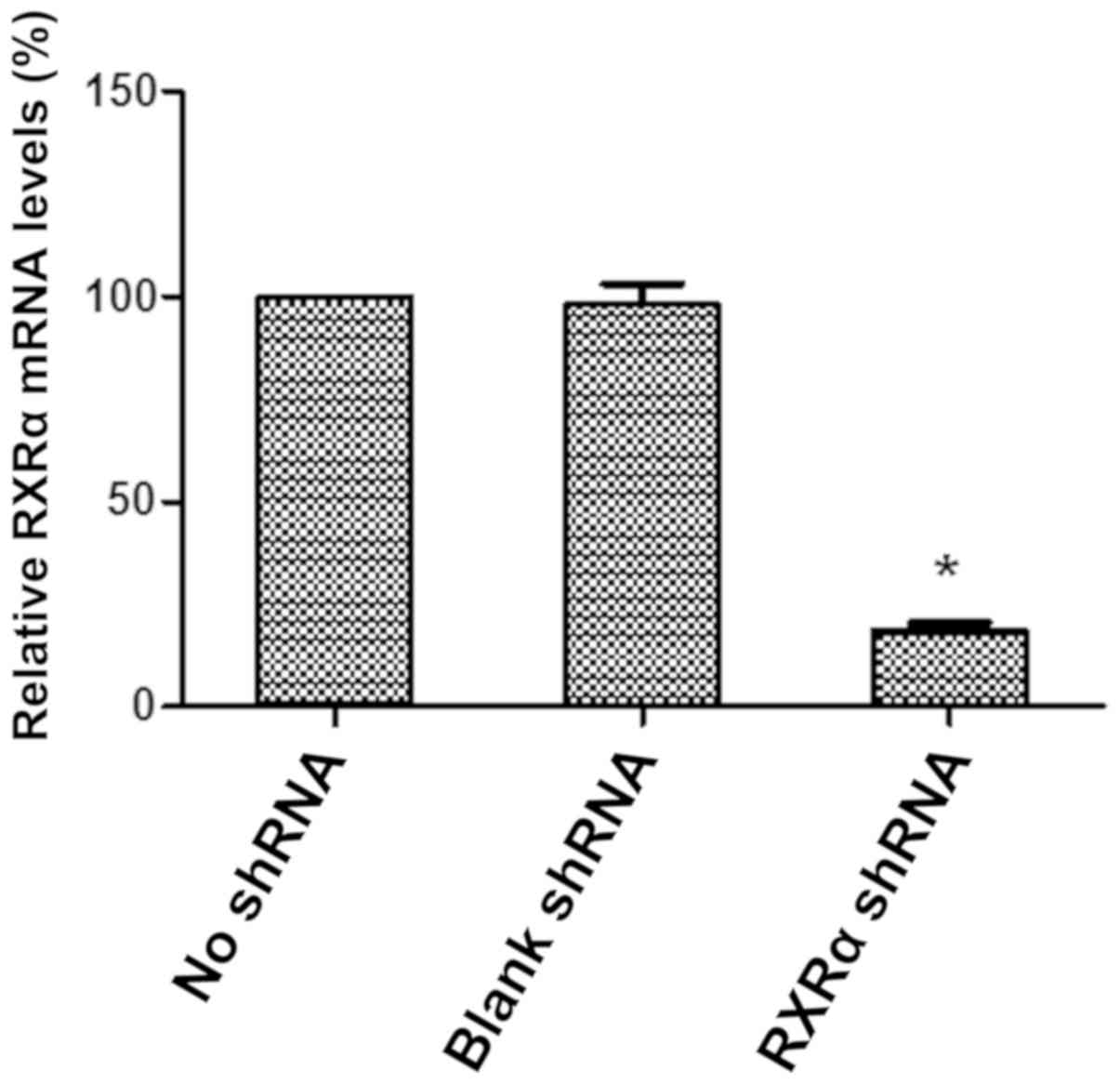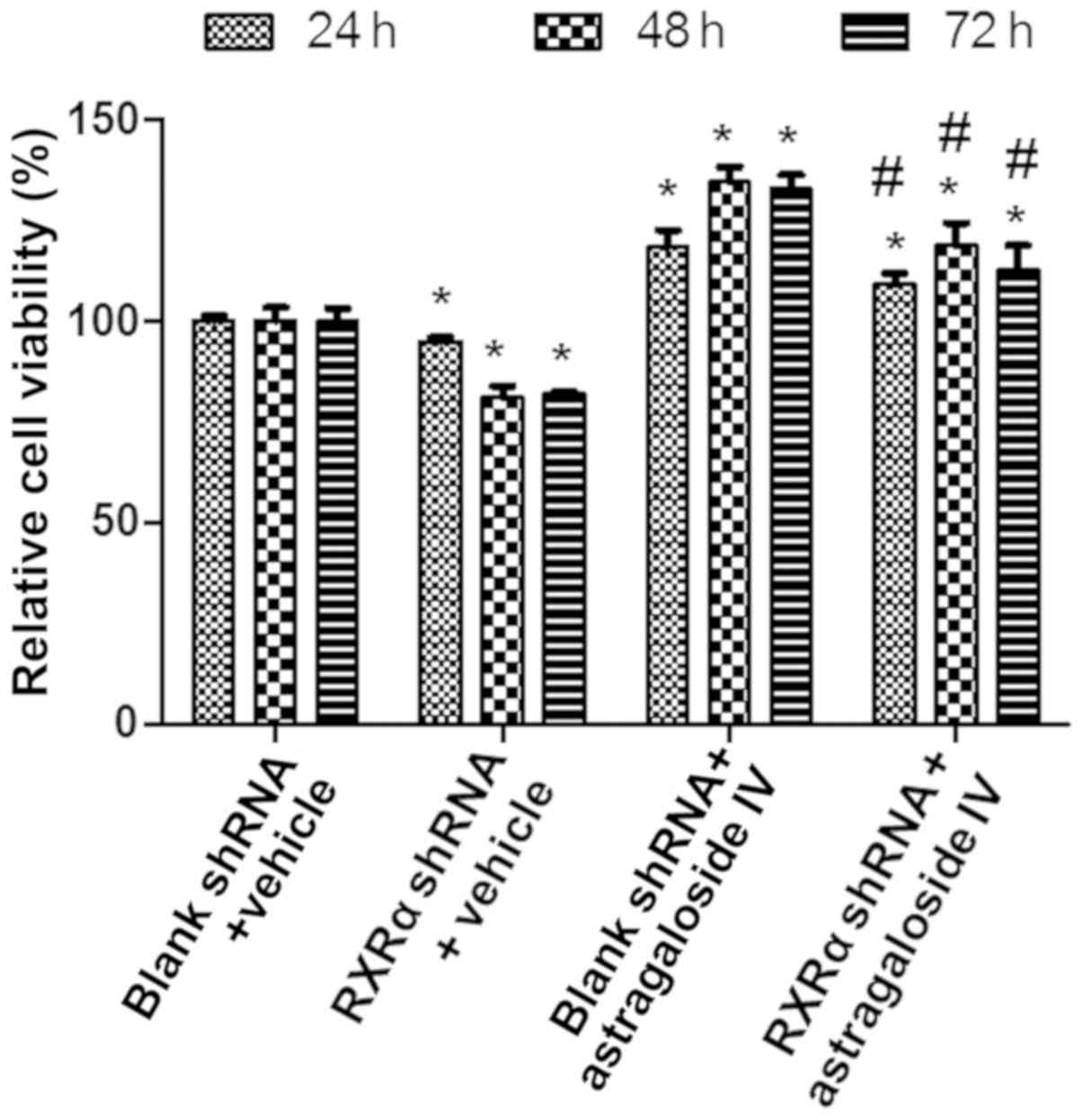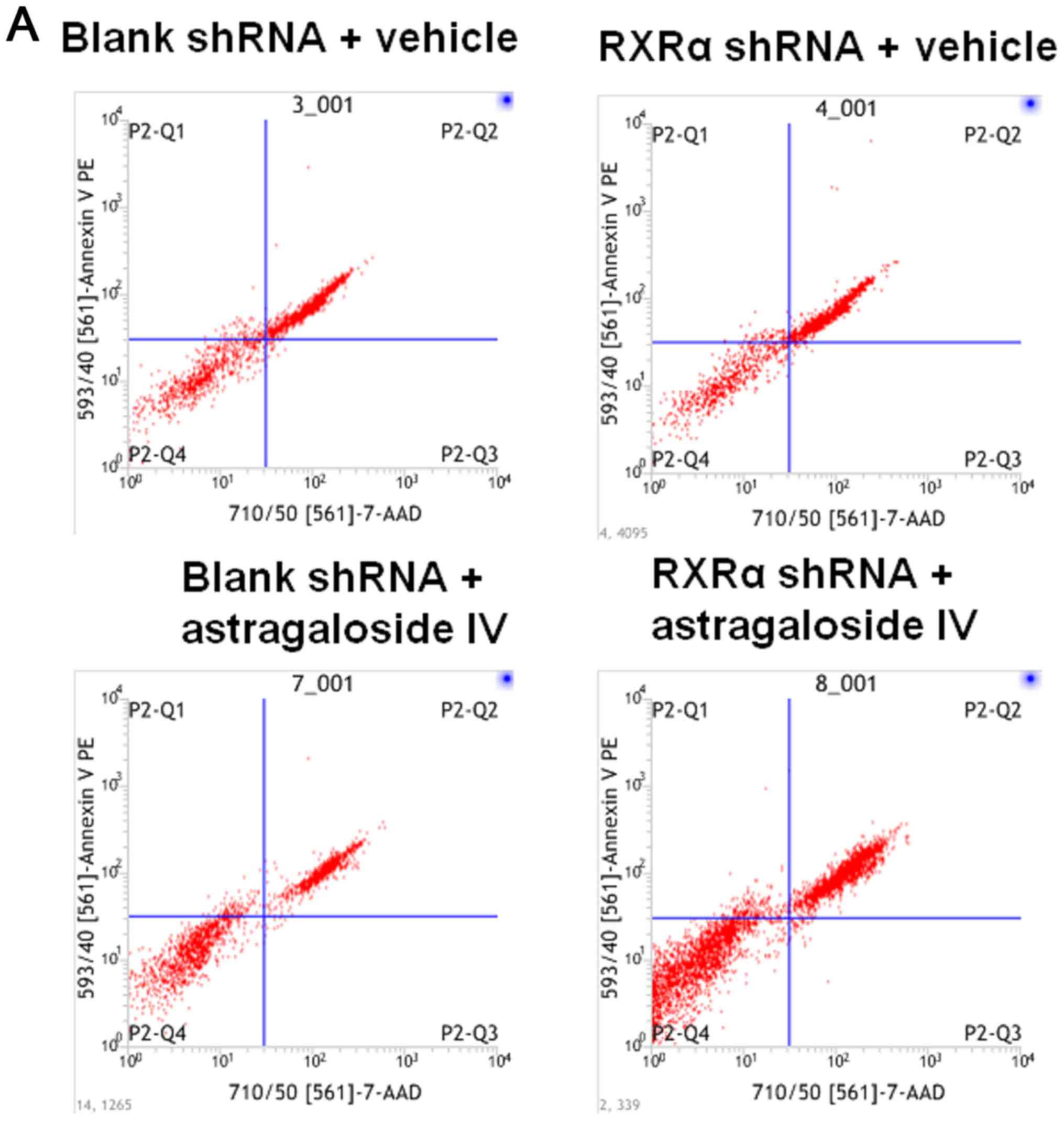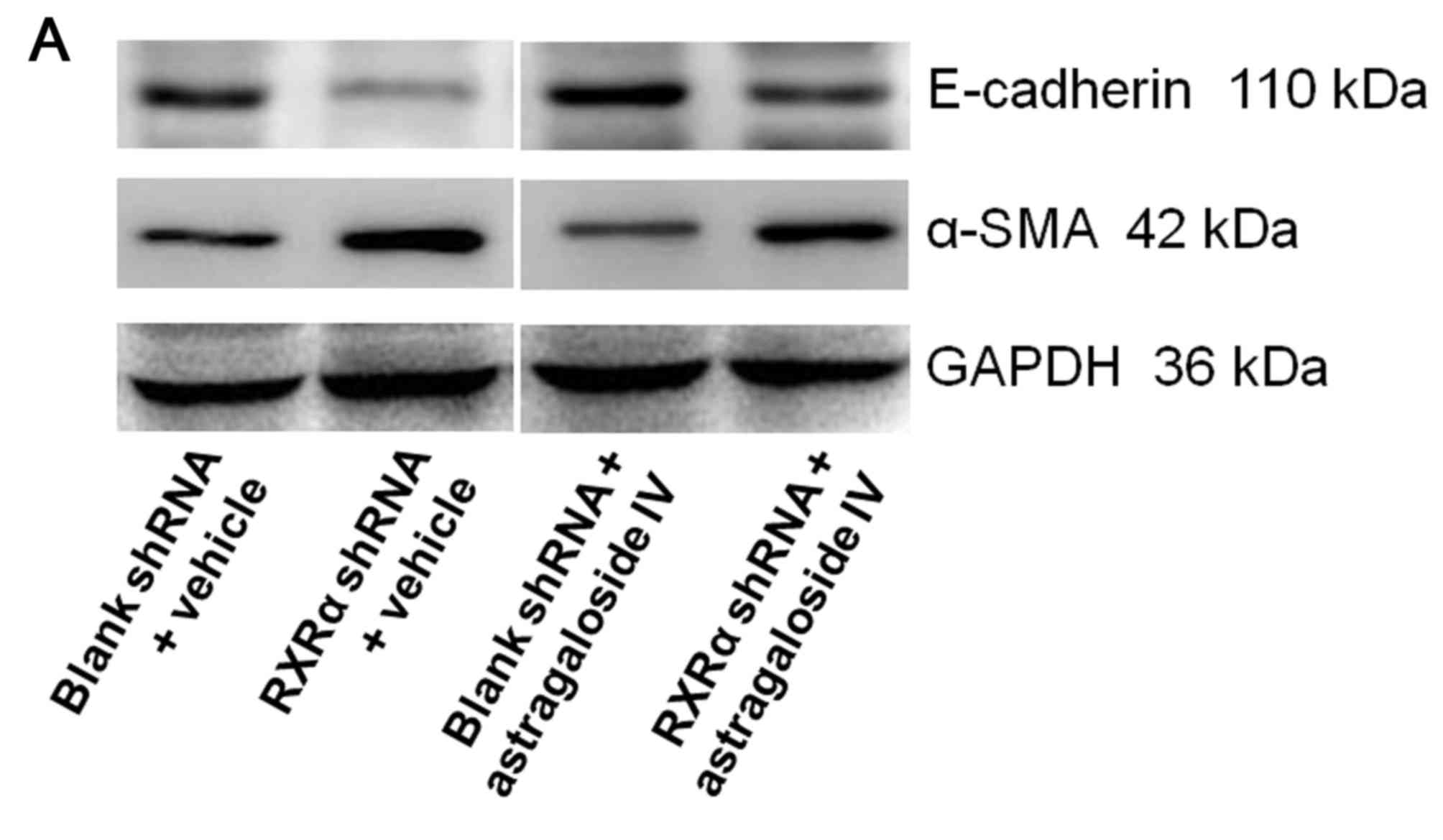|
1
|
Khan S and Rosner MH: Peritoneal dialysis
for patients with end-stage renal disease and liver cirrhosis.
Perit Dial Int. 38:397–401. 2018. View Article : Google Scholar : PubMed/NCBI
|
|
2
|
Vareldzis R, Naljayan M and Reisin E: The
incidence and pathophysiology of the obesity paradox: Should
peritoneal dialysis and kidney transplant be offered to patients
with obesity and end-stage renal disease? Curr Hypertens Rep.
20:842018. View Article : Google Scholar : PubMed/NCBI
|
|
3
|
Javaid MM, Khan BA and Subramanian S:
Peritoneal dialysis as initial dialysis modality: A viable option
for late-presenting end-stage renal disease. J Nephrol. 32:51–56.
2019. View Article : Google Scholar : PubMed/NCBI
|
|
4
|
Wang WN, Zhang WL, Sun T, Ma FZ, Su S and
Xu ZG: Effect of peritoneal dialysis versus hemodialysis on renal
anemia in renal in end-stage disease patients: A meta-analysis. Ren
Fail. 39:59–66. 2017. View Article : Google Scholar : PubMed/NCBI
|
|
5
|
Krediet RT, Abrahams AC, de Fijter CWH,
Betjes MGH, Boer WH, van Jaarsveld BC, Konings CJAM and Dekker FW:
The truth on current peritoneal dialysis: State of the art. Neth J
Med. 75:179–189. 2017.PubMed/NCBI
|
|
6
|
Krediet RT and Struijk DG: Peritoneal
changes in patients on long-term peritoneal dialysis. Nat Rev
Nephrol. 9:419–429. 2013. View Article : Google Scholar : PubMed/NCBI
|
|
7
|
Bargman JM: Advances in peritoneal
dialysis: A review. Semin Dial. 25:545–549. 2012. View Article : Google Scholar : PubMed/NCBI
|
|
8
|
Davies SJ: Unraveling the mechanisms of
progressive peritoneal membrane fibrosis. Kidney Int. 89:1185–1187.
2016. View Article : Google Scholar : PubMed/NCBI
|
|
9
|
Witowski J, Kawka E, Rudolf A and Jörres
A: New developments in peritoneal fibroblast biology: Implications
for inflammation and fibrosis in peritoneal dialysis. Biomed Res
Int. 2015:1347082015. View Article : Google Scholar : PubMed/NCBI
|
|
10
|
Raby AC and Labéta MO: Preventing
peritoneal dialysis-associated fibrosis by therapeutic blunting of
peritoneal Toll-like receptor activity. Front Physiol. 9:16922018.
View Article : Google Scholar : PubMed/NCBI
|
|
11
|
Zhang Z, Jiang N and Ni Z: Strategies for
preventing peritoneal fibrosis in peritoneal dialysis patients: New
insights based on peritoneal inflammation and angiogenesis. Front
Med. 11:349–358. 2017. View Article : Google Scholar : PubMed/NCBI
|
|
12
|
Zhou Q, Bajo MA, Del Peso G, Yu X and
Selgas R: Preventing peritoneal membrane fibrosis in peritoneal
dialysis patients. Kidney Int. 90:515–524. 2016. View Article : Google Scholar : PubMed/NCBI
|
|
13
|
Lee HB and Ha H: Mechanisms of
epithelial-mesenchymal transition of peritoneal mesothelial cells
during peritoneal dialysis. J Korean Med Sci. 22:943–945. 2007.
View Article : Google Scholar : PubMed/NCBI
|
|
14
|
De Vriese AS, Tilton RG, Mortier S and
Lameire NH: Myofibroblast transdifferentiation of mesothelial cells
is mediated by RAGE and contributes to peritoneal fibrosis in
uraemia. Nephrol Dial Transplant. 21:2549–2555. 2006. View Article : Google Scholar : PubMed/NCBI
|
|
15
|
Wu J, Xing C, Zhang L, Mao H, Chen X,
Liang M, Wang F, Ren H, Cui H, Jiang A, et al: Autophagy promotes
fibrosis and apoptosis in the peritoneum during long-term
peritoneal dialysis. J Cell Mol Med. 22:1190–1201. 2018.PubMed/NCBI
|
|
16
|
Dobbie JW: Pathogenesis of peritoneal
fibrosing syndromes (sclerosing peritonitis) in peritoneal
dialysis. Perit Dial Int. 12:14–27. 1992.PubMed/NCBI
|
|
17
|
Strippoli R, Moreno-Vicente R, Battistelli
C, Cicchini C, Noce V, Amicone L, Marchetti A, Del Pozo MA and
Tripodi M: Molecular mechanisms underlying peritoneal EMT and
fibrosis. Stem Cells Int. 2016:35436782016. View Article : Google Scholar : PubMed/NCBI
|
|
18
|
Wang L, Liu N, Xiong C, Xu L, Shi Y, Qiu
A, Zang X, Mao H and Zhuang S: Inhibition of EGF receptor blocks
the development and progression of peritoneal fibrosis. J Am Soc
Nephrol. 27:2631–2644. 2016. View Article : Google Scholar : PubMed/NCBI
|
|
19
|
Morinelli TA, Luttrell LM, Strungs EG and
Ullian ME: Angiotensin II receptors and peritoneal dialysis-induced
peritoneal fibrosis. Int J Biochem Cell Biol. 77:240–250. 2016.
View Article : Google Scholar : PubMed/NCBI
|
|
20
|
Bartosova M, Schaefer B, Vondrak K, Sallay
P, Taylan C, Cerkauskiene R, Dzierzega M, Milosevski-Lomic G,
Büscher R, Zaloszyc A, et al: Peritoneal dialysis vintage and
glucose exposure but not peritonitis episodes drive peritoneal
membrane transformation during the first years of PD. Front
Physiol. 10:3562019. View Article : Google Scholar : PubMed/NCBI
|
|
21
|
Choi SY, Ryu HM, Choi JY, Cho JH, Kim CD,
Kim YL and Park SH: The role of Toll-like receptor 4 in
high-glucose-induced inflammatory and fibrosis markers in human
peritoneal mesothelial cells. Int Urol Nephrol. 49:171–181. 2017.
View Article : Google Scholar : PubMed/NCBI
|
|
22
|
Wang L and Zhuang S: The role of tyrosine
kinase receptors in peritoneal fibrosis. Perit Dial Int.
35:497–505. 2015. View Article : Google Scholar : PubMed/NCBI
|
|
23
|
Tomino Y: Mechanisms and interventions in
peritoneal fibrosis. Clin Exp Nephrol. 16:109–114. 2012. View Article : Google Scholar : PubMed/NCBI
|
|
24
|
Duan S, Yu J, Liu Q, Wang Y, Pan P, Xiao
L, Ling G and Liu F: Epithelial-to-mesenchymal transdifferentiation
of peritoneal mesothelial cells mediated by oxidative stress in
peritoneal fibrosis rats. Zhong Nan Da Xue Xue Bao Yi Xue Ban.
36:34–43. 2011.PubMed/NCBI
|
|
25
|
Li Z, Zhang L, He W, Zhu C, Yang J and
Sheng M: Astragalus membranaceus inhibits peritoneal
fibrosis via monocyte chemoattractant protein (MCP)-1 and the
transforming growth factor-β1 (TGF-β1) pathway in rats submitted to
peritoneal dialysis. Int J Mol Sci. 15:12959–12971. 2014.
View Article : Google Scholar : PubMed/NCBI
|
|
26
|
Shan G, Zhou XJ, Xia Y and Qian HJ:
Astragalus membranaceus ameliorates renal interstitial
fibrosis by inhibiting tubular epithelial-mesenchymal transition
in vivo and in vitro. Exp Ther Med. 11:1611–1616.
2016. View Article : Google Scholar : PubMed/NCBI
|
|
27
|
Zhou X, Sun X, Gong X, Yang Y, Chen C,
Shan G and Yao Q: Astragaloside IV from Astragalus
membranaceus ameliorates renal interstitial fibrosis by
inhibiting inflammation via TLR4/NF-кB in vivo and in vitro. Int
Immunopharmacol. 42:18–24. 2017. View Article : Google Scholar : PubMed/NCBI
|
|
28
|
Yu M, Shi J, Sheng M, Gao K, Zhang L, Liu
L and Zhu Y: Astragalus inhibits Epithelial-to-Mesenchymal
transition of peritoneal mesothelial cells by Down-regulating
β-catenin. Cell Physiol Biochem. 51:2794–2813. 2018. View Article : Google Scholar : PubMed/NCBI
|
|
29
|
Zhang WD, Chen H, Zhang C, Liu RH, Li HL
and Chen HZ: Astragaloside IV from Astragalus membranaceus
shows cardioprotection during myocardial ischemia in vivo and in
vitro. Planta Med. 72:4–8. 2006. View Article : Google Scholar : PubMed/NCBI
|
|
30
|
Li W and Fitzloff JF: Determination of
astragaloside IV in Radix astragali (Astragalus membranaceus
var. monghulicus) using high-performance liquid chromatography with
evaporative light-scattering detection. J Chromatogr Sci.
39:459–462. 2001. View Article : Google Scholar : PubMed/NCBI
|
|
31
|
Zhang L, Li Z, He W, Xu L, Wang J, Shi J
and Sheng M: Effects of Astragaloside IV Against the TGF-β1-induced
Epithelial-to-Mesenchymal transition in peritoneal mesothelial
cells by promoting Smad 7 expression. Cell Physiol Biochem.
37:43–54. 2015. View Article : Google Scholar : PubMed/NCBI
|
|
32
|
Fagerberg L, Hallström BM, Oksvold P,
Kampf C, Djureinovic D, Odeberg J, Habuka M, Tahmasebpoor S,
Danielsson A, Edlund K, et al: Analysis of the human
tissue-specific expression by genome-wide integration of
transcriptomics and antibody-based proteomics. Mol Cell Proteomics.
13:397–406. 2014. View Article : Google Scholar : PubMed/NCBI
|
|
33
|
Yue F, Cheng Y, Breschi A, Vierstra J, Wu
W, Ryba T, Sandstrom R, Ma Z, Davis C, Pope BD, et al: A
comparative encyclopedia of DNA elements in the mouse genome.
Nature. 515:355–364. 2014. View Article : Google Scholar : PubMed/NCBI
|
|
34
|
Bourguet W, Ruff M, Chambon P, Gronemeyer
H and Moras D: Crystal structure of the ligand-binding domain of
the human nuclear receptor RXR-alpha. Nature. 375:377–382. 1995.
View Article : Google Scholar : PubMed/NCBI
|
|
35
|
Shulman AI and Mangelsdorf DJ: Retinoid ×
receptor heterodimers in the metabolic syndrome. N Engl J Med.
353:604–615. 2005. View Article : Google Scholar : PubMed/NCBI
|
|
36
|
Rastinejad F: Retinoid X receptor and its
partners in the nuclear receptor family. Curr Opin Struct Biol.
11:33–38. 2001. View Article : Google Scholar : PubMed/NCBI
|
|
37
|
Watanabe M and Kakuta H: Retinoid X
receptor antagonists. Int J Mol Sci. 19(pii): E23542018. View Article : Google Scholar : PubMed/NCBI
|
|
38
|
Reitzel AM, Macrander J, Mane-Padros D,
Fang B, Sladek FM and Tarrant AM: Conservation of DNA and ligand
binding properties of retinoid X receptor from the placozoan
Trichoplax adhaerens to human. J Steroid Biochem Mol Biol.
184:3–10. 2018. View Article : Google Scholar : PubMed/NCBI
|
|
39
|
Morishita KI and Kakuta H: Retinoid X
receptor ligands with anti-type 2 diabetic activity. Curr Top Med
Chem. 17:696–707. 2017. View Article : Google Scholar : PubMed/NCBI
|
|
40
|
Menéndez-Gutiérrez MP and Ricote M: The
multi-faceted role of retinoid X receptor in bone remodeling. Cell
Mol Life Sci. 74:2135–2149. 2017. View Article : Google Scholar : PubMed/NCBI
|
|
41
|
Lee YC, Hung SY, Liou HH, Lin TM, Tsai CH,
Lin SH, Tsai YS, Chang MY, Wang HH, Ho LC, et al: Vitamin D can
ameliorate chlorhexidine gluconate-induced peritoneal fibrosis and
functional deterioration through the inhibition of
Epithelial-to-mesenchymal transition of mesothelial cells. Biomed
Res Int. 2015:5950302015. View Article : Google Scholar : PubMed/NCBI
|
|
42
|
Yang L, Wu L, Zhang X, Hu Y, Fan Y and Ma
J: 1,25(OH)2D3/VDR attenuates high glucoseinduced
epithelialmesenchymal transition in human peritoneal mesothelial
cells via the TGFβ/Smad3 pathway. Mol Med Rep. 15:2273–2279. 2017.
View Article : Google Scholar : PubMed/NCBI
|
|
43
|
Yang L, Wu L, Du S, Hu Y, Fan Y and Ma J:
1,25(OH)2D3 inhibits high glucose-induced apoptosis and ROS
production in human peritoneal mesothelial cells via the MAPK/P38
pathway. Mol Med Rep. 14:839–844. 2016. View Article : Google Scholar : PubMed/NCBI
|
|
44
|
Su X, Yu R, Yang X, Zhou G, Wang Y, Li L
and Li D: Telmisartan attenuates peritoneal fibrosis via peroxisome
proliferator-activated receptor-gamma activation in rats. Clin Exp
Pharmacol Physiol. 42:671–679. 2015. View Article : Google Scholar : PubMed/NCBI
|
|
45
|
Su X, Zhou G, Wang Y, Yang X, Li L, Yu R
and Li D: The PPARβ/δ agonist GW501516 attenuates peritonitis in
peritoneal fibrosis via inhibition of TAK1-NFκB pathway in rats.
Inflammation. 37:729–737. 2014. View Article : Google Scholar : PubMed/NCBI
|
|
46
|
Zhou G, Su X, Ma J, Wang L and Li D:
Pioglitazone inhibits high glucose-induced synthesis of
extracellular matrix by NF-κB and AP-1 pathways in rat peritoneal
mesothelial cells. Mol Med Rep. 7:1336–1342. 2013. View Article : Google Scholar : PubMed/NCBI
|
|
47
|
Zhang YF, Wang Q, Su YY, Wang JL, Hua BJ,
Yang S, Feng JX and Li HY: PPAR-γ agonist rosiglitazone protects
rat peritoneal mesothelial cells against peritoneal dialysis
solution-induced damage. Mol Med Rep. 15:1786–1792. 2017.
View Article : Google Scholar : PubMed/NCBI
|
|
48
|
Rougier JP, Moullier P, Piedagnel R and
Ronco PM: Hyperosmolality suppresses but TGF beta 1 increases MMP9
in human peritoneal mesothelial cells. Kidney Int. 51:337–347.
1997. View Article : Google Scholar : PubMed/NCBI
|
|
49
|
Zhao JL, Guo MZ, Zhu JJ, Zhang T and Min
DY: Curcumin suppresses epithelial-to-mesenchymal transition of
peritoneal mesothelial cells (HMrSV5) through regulation of
transforming growth factor-activated kinase 1 (TAK1). Cell Mol Biol
Lett. 24:322019. View Article : Google Scholar : PubMed/NCBI
|
|
50
|
Zhang P, Dai H and Peng L: Involvement of
STAT3 signaling in high glucose-induced epithelial mesenchymal
transition in human peritoneal mesothelial cell line HMrSV5. Kidney
Blood Press Res. 44:179–187. 2019. View Article : Google Scholar : PubMed/NCBI
|
|
51
|
Chu Y, Wang Y, Zheng Z, Lin Y, He R, Liu J
and Yang X: Proinflammatory effect of high glucose concentrations
on HMrSV5 cells via the autocrine effect of HMGB1. Front Physiol.
8:7622017. View Article : Google Scholar : PubMed/NCBI
|
|
52
|
Tani H, Sato Y, Ueda M, Miyazaki Y,
Suginami K, Horie A, Konishi I and Shinomura T: Role of versican in
the pathogenesis of peritoneal endometriosis. J Clin Endocrinol
Metab. 101:4349–4356. 2016. View Article : Google Scholar : PubMed/NCBI
|
|
53
|
Livak KJ and Schmittgen TD: Analysis of
relative gene expression data using real-time quantitative PCR and
the 2(-Delta Delta C(T)) method. Methods. 25:402–408. 2001.
View Article : Google Scholar : PubMed/NCBI
|
|
54
|
Shi S, Zhang Y, Wen W, Zhao Y and Sun L:
Molecular mechanisms of melatonin in the reversal of LPS-induced
EMT in peritoneal mesothelial cells. Mol Med Rep. 14:4342–4348.
2016. View Article : Google Scholar : PubMed/NCBI
|
|
55
|
Zhang L, Liu J, Liu Y, Xu Y, Zhao X, Qian
J, Sun B and Xing C: Fluvastatin inhibits the expression of
fibronectin in human peritoneal mesothelial cells induced by
high-glucose peritoneal dialysis solution via SGK1 pathway. Clin
Exp Nephrol. 19:336–342. 2015. View Article : Google Scholar : PubMed/NCBI
|
|
56
|
Yang Y, Liu K, Liang Y, Chen Y, Chen Y and
Gong Y: Histone acetyltransferase inhibitor C646 reverses
epithelial to mesenchymal transition of human peritoneal
mesothelial cells via blocking TGF-β1/Smad3 signaling pathway in
vitro. Int J Clin Exp Pathol. 8:2746–2754. 2015.PubMed/NCBI
|
|
57
|
Ju KD, Kim HJ, Tsogbadrakh B, Lee J, Ryu
H, Cho EJ, Hwang YH, Kim K, Yang J, Ahn C and Oh KH: HL156A, a
novel AMP-activated protein kinase activator, is protective against
peritoneal fibrosis in an in vivo and in vitro model of peritoneal
fibrosis. Am J Physiol Renal Physiol. 310:F342–F350. 2016.
View Article : Google Scholar : PubMed/NCBI
|
|
58
|
Xiong C, Liu N, Fang L, Zhuang S and Yan
H: Suramin inhibits the development and progression of peritoneal
fibrosis. J Pharmacol Exp Ther. 351:373–382. 2014. View Article : Google Scholar : PubMed/NCBI
|
|
59
|
Liu J, Zeng L, Zhao Y, Zhu B, Ren W and Wu
C: Selenium suppresses lipopolysaccharide-induced fibrosis in
peritoneal mesothelial cells through inhibition of
epithelial-to-mesenchymal transition. Biol Trace Elem Res.
161:202–209. 2014. View Article : Google Scholar : PubMed/NCBI
|
|
60
|
Lu Y, Gao L, Li L, Zhu Y, Wang Z, Shen H
and Song K: Hydrogen sulfide alleviates peritoneal fibrosis via
attenuating inflammation and TGF-β1 synthesis. Nephron.
131:210–219. 2015. View Article : Google Scholar : PubMed/NCBI
|
|
61
|
Shin HS, Ko J, Kim DA, Ryu ES, Ryu HM,
Park SH, Kim YL, Oh ES and Kang DH: Metformin ameliorates the
phenotype transition of peritoneal mesothelial cells and peritoneal
fibrosis via a modulation of oxidative stress. Sci Rep. 7:56902017.
View Article : Google Scholar : PubMed/NCBI
|
|
62
|
Qian W, Cai X, Qian Q, Zhang W and Wang D:
Astragaloside IV modulates TGF-β1-dependent epithelial-mesenchymal
transition in bleomycin-induced pulmonary fibrosis. J Cell Mol Med.
22:4354–4365. 2018. View Article : Google Scholar : PubMed/NCBI
|
|
63
|
Wang X, Gao Y, Tian N, Wang T, Shi Y, Xu J
and Wu B: Astragaloside IV inhibits glucose-induced
epithelial-mesenchymal transition of podocytes through autophagy
enhancement via the SIRT-NF-κB p65 axis. Sci Rep. 9:3232019.
View Article : Google Scholar : PubMed/NCBI
|
|
64
|
Yao XM, Liu YJ, Wang YM, Wang H, Zhu BB,
Liang YP, Yao WG, Yu H, Wang NS, Zhang XM and Peng W: Astragaloside
IV prevents high glucose-induced podocyte apoptosis via
downregulation of TRPC6. Mol Med Rep. 13:5149–5156. 2016.
View Article : Google Scholar : PubMed/NCBI
|
|
65
|
You L, Fang Z, Shen G, Wang Q, He Y, Ye S,
Wang L, Hu M, Lin Y, Liu M and Jiang A: Astragaloside IV prevents
high glucoseinduced cell apoptosis and inflammatory reactions
through inhibition of the JNK pathway in human umbilical vein
endothelial cells. Mol Med Rep. 19:1603–1612. 2019.PubMed/NCBI
|
|
66
|
Wang J and Guo HM: Astragaloside IV
ameliorates high glucose-induced HK-2 cell apoptosis and oxidative
stress by regulating the Nrf2/ARE signaling pathway. Exp Ther Med.
17:4409–4416. 2019.PubMed/NCBI
|
|
67
|
Xue B, Huang J, Ma B, Yang B, Chang D and
Liu J: Astragaloside IV protects primary cerebral cortical neurons
from oxygen and glucose deprivation/reoxygenation by activating the
PKA/CREB pathway. Neuroscience. 404:326–337. 2019. View Article : Google Scholar : PubMed/NCBI
|
|
68
|
Zhu J and Wen K: Astragaloside IV inhibits
TGF-β1-induced epithelial-mesenchymal transition through inhibition
of the PI3K/Akt/NF-κB pathway in gastric cancer cells. Phytother
Res. 32:1289–1296. 2018. View Article : Google Scholar : PubMed/NCBI
|
|
69
|
Qin CD, Ma DN, Ren ZG, Zhu XD, Wang CH,
Wang YC, Ye BG, Cao MQ, Gao DM and Tang ZY: Astragaloside IV
inhibits metastasis in hepatoma cells through the suppression of
epithelial-mesenchymal transition via the Akt/GSK-3β/β-catenin
pathway. Oncol Rep. 37:1725–1735. 2017. View Article : Google Scholar : PubMed/NCBI
|
|
70
|
Li Y, Ye Y and Chen H: Astragaloside IV
inhibits cell migration and viability of hepatocellular carcinoma
cells via suppressing long noncoding RNA ATB. Biomed Pharmacother.
99:134–141. 2018. View Article : Google Scholar : PubMed/NCBI
|
|
71
|
Yang J, Zhu T, Liu X, Zhang L, Yang Y,
Zhang J and Guο M: Heat shock protein 70 protects rat peritoneal
mesothelial cells from advanced glycation end-products-induced
Epithelial-to-mesenchymal transition through mitogen-activated
protein Kinases/extracellular signal-regulated kinases and
transforming growth factor-β/Smad pathways. Mol Med Rep.
11:4473–4481. 2015. View Article : Google Scholar : PubMed/NCBI
|
|
72
|
Liu J, Bao J, Hao J, Peng Y and Hong F:
HSP70 inhibits high glucose-induced Smad3 activation and attenuates
epithelial-to-mesenchymal transition of peritoneal mesothelial
cells. Mol Med Rep. 10:1089–1095. 2014. View Article : Google Scholar : PubMed/NCBI
|
|
73
|
Abe S, Obata Y, Oka S, Koji T, Nishino T
and Izumikawa K: Chondroitin sulfate prevents peritoneal fibrosis
in mice by suppressing NF-κB activation. Med Mol Morphol.
49:144–153. 2016. View Article : Google Scholar : PubMed/NCBI
|
|
74
|
He L, Che M, Hu J, Li S, Jia Z, Lou W, Li
C, Yang J, Sun S, Wang H and Chen X: Twist contributes to
proliferation and epithelial-to-mesenchymal transition-induced
fibrosis by regulating YB-1 in human peritoneal mesothelial cells.
Am J Pathol. 185:2181–2193. 2015. View Article : Google Scholar : PubMed/NCBI
|
|
75
|
Oba-Yabana I, Mori T, Takahashi C, Hirose
T, Ohsaki Y, Kinugasa S, Muroya Y, Sato E, Nguyen G, Piedagnel R,
et al: Acidic organelles mediate TGF-β1-induced cellular fibrosis
via (pro)renin receptor and vacuolar ATPase trafficking in human
peritoneal mesothelial cells. Sci Rep. 8:26482018. View Article : Google Scholar : PubMed/NCBI
|
|
76
|
Shang J, He Q, Chen Y, Yu D, Sun L, Cheng
G, Liu D, Xiao J and Zhao Z: miR-15a-5p suppresses inflammation and
fibrosis of peritoneal mesothelial cells induced by peritoneal
dialysis via targeting VEGFA. J Cell Physiol. 234:9746–9755. 2019.
View Article : Google Scholar : PubMed/NCBI
|
|
77
|
Gao Q, Xu L, Yang Q and Guan TJ:
MicroRNA-21 contributes to high glucose-induced fibrosis in
peritoneal mesothelial cells in rat models by activation of the
Ras-MAPK signaling pathway via Sprouty-1. J Cell Physiol.
234:5915–5925. 2019. View Article : Google Scholar : PubMed/NCBI
|
|
78
|
Liu HS, Shi HL, Huang F, Peterson KE, Wu
H, Lan YY, Zhang BB, He YX, Woods T, Du M, et al: Astragaloside IV
inhibits microglia activation via glucocorticoid receptor mediated
signaling pathway. Sci Rep. 6:191372016. View Article : Google Scholar : PubMed/NCBI
|
|
79
|
Wang X, Wang Y, Hu JP, Yu S, Li BK, Cui Y,
Ren L and Zhang LD: Astragaloside IV, a natural PPARgamma agonist,
reduces Aβ production in Alzheimer's disease through inhibition of
BACE1. Mol Neurobiol. 54:2939–2949. 2017. View Article : Google Scholar : PubMed/NCBI
|















